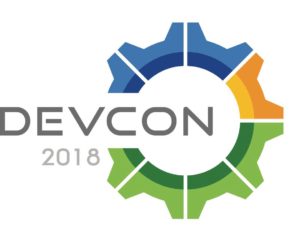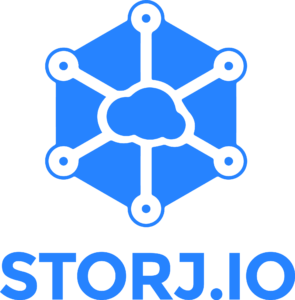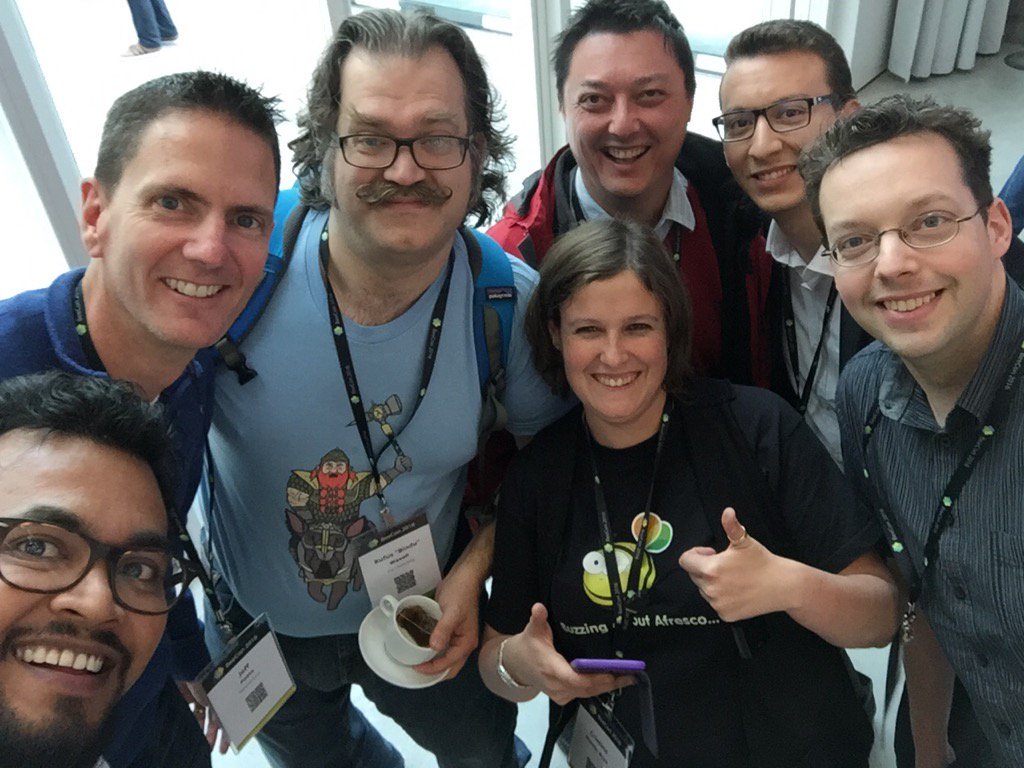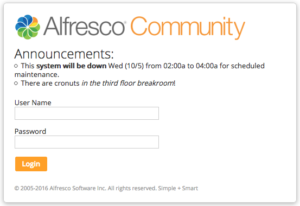 On Thursday the news broke that Activiti had been forked to create a new open source Business Process Management (BPM) engine called Flowable. Activiti is a BPM engine that Alfresco Software, Inc. funded to replace JBoss jBPM. The Activiti engine can automate business processes as a standalone application, but it is also the embedded workflow engine that Alfresco ships as part of its ECM platform.
On Thursday the news broke that Activiti had been forked to create a new open source Business Process Management (BPM) engine called Flowable. Activiti is a BPM engine that Alfresco Software, Inc. funded to replace JBoss jBPM. The Activiti engine can automate business processes as a standalone application, but it is also the embedded workflow engine that Alfresco ships as part of its ECM platform.
A fork is when the evolution of an open source project intentionally diverges. Instead of one code base controlled by a single entity, a fork creates a second code base from the first, allowing each project to evolve separately going forward in accordance with their own distinct roadmap and governance model.
Forks happen fairly frequently, and in places like GitHub, where a lot of collaboration around open source software takes place, they happen constantly, by design. But when a significant fork happens to a project, especially one that has commercial backing, like this one, it is worth taking note. Alfresco depends on Activiti for its ECM platform, so now it will be forced to either continue to develop Activiti under their own direction, or switch to the new project like any other upstream dependency.
The news of the fork comes about a month after my blog post reporting that multiple Activiti engineers had resigned from Alfresco. It is now public that those engineers were Joram Barrez and Tijs Rademakers, who were absolutely the heart and soul of the Activiti project. Those departures left a big question mark hanging over the future of Activiti.
Then the big news came on Thursday. Tijs Rademakers released this tweet, announcing a new project, Flowable, with a link to a blog post.

The blog post outlined some high-level reasons for the fork:
“We acknowledge Alfresco’s stewardship of the Activiti.org project, and as employees we enjoyed considerable freedom to develop the project over several years. However, things didn’t work out as we expected or hoped. We came to the conclusion the only way to continue evolving our ideas was to fork.”
The blog post goes on to talk about forks, in general, and their potential impact.
I wanted more detail so I spent some time talking to members of the new Flowable project last week to understand why they forked Activiti and what we can expect going forward.
The first thing that is immediately obvious when talking to any of the former Activiti engineers is how much passion they have for the project. Leaving Alfresco was clearly a hard decision. But the hardest part was feeling disconnected from the software they created and the fear that the project would no longer have the stewardship it enjoyed prior to their departure. “We couldn’t just leave it there,” said one of the engineers. Indeed, looking at the Activiti forum as well as the commits for Activiti on GitHub, it is obvious that Alfresco is still working to rebuild the Activiti team.

After their departure, the former employees continued to discuss with Alfresco Software how they might be able to move forward, but the two sides could not reach an agreement. It soon became obvious to the team that in order to move the project forward they would have to take more direct control, and the only way to do that was to fork.
Specifically, the team started with the latest Activiti release, 5.21.0, and added a new feature called “transient variables” and some other small enhancements as well as bug fixes, and released that as Flowable 5.22.0 (GitHub).
It’s actually not unlike the creation of MariaDB after Oracle acquired Sun (and then became owners of MySQL). In fact, it is the stated goal of the engineers for Flowable to be a drop-in replacement for Activiti, just like MariaDB is for MySQL.
The engineers say they are looking forward to getting back to their open source roots. “In true open source fashion, we want people to get involved in whatever way they can, whether that’s documentation, testing, or code contributions,” said the team. The Flowable project will run as a meritocracy, with trusted developers earning commit rights over time, regardless of their commercial affiliation.
The fork has actually made many people in the community a lot more comfortable with the direction of the project because the engineers who created the software and made the vast majority of the commits during its life are now committed to moving it forward, and this fork gives them the freedom to do it. “Everyone has been supportive so far,” the team said, “Now the burden is on us to start releasing.”
Clearly, Alfresco Software is unhappy with the fork. In a blog post published Friday, John Newton, Alfresco co-founder and CTO, said he was hoping for a different outcome:
“Unfortunately, some of my early friends on the Activiti project have disagreed with our direction and have taken the step of forking the Activiti code. This is disappointing, because the work that they have done is very good and has generally been in the spirit of open source. However, the one thing that we could not continue to give them was exclusive control of the project. I truly wish that we could have found a way to work with them within a community framework.”
John’s post indicates that the company intends to continue to develop Activiti. John writes, “We are redoubling our determination to grow Activiti faster, better and more openly.”
Growing Activiti faster will be key. If Alfresco is slow to field a new Activiti team and then fails to give the market what it wants at the pace it wants it, those stuck on a lagging codebase may become frustrated, particularly if Flowable is able to out-innovate Alfresco. Flowable has the advantage here because they are the original core team, they are more nimble, and they can hit the ground running. But without Alfresco as a sponsor, Flowable engineers must find a way to earn a living as well as move the project forward. Ideally they will be able to make the two intersect by finding clients to pay them to stay focused on the project.
Alfresco’s product and strategy depends heavily on Activiti. From a purely commercial perspective it is understandable they would want as much control over the codebase as possible. However, there are other commercial open source companies that have strategic dependencies on upstream open source projects they don’t fully control. Elastic’s dependency on Lucene comes to mind. If Alfresco could participate in the Flowable project in a similar way it could potentially benefit everyone, but John’s post seems to indicate that is not in the cards. The next few months will tell us just how committed the company is to continuing with Activiti as a separate project.
Personally, regardless of what happens with Activiti, I hope Flowable flourishes. If team member passion was the only predictor of success I’d say it’s a sure bet it will.
 Encouraged by the success of the independently-organized, developer-focused BeeCon conference, and seeking to continue its renewed focus on developers, Alfresco has decided to resurrect its own annual developer-focused event. This week Alfresco announced that DevCon will be held January 16 – 18 in Lisbon, Portugal.
Encouraged by the success of the independently-organized, developer-focused BeeCon conference, and seeking to continue its renewed focus on developers, Alfresco has decided to resurrect its own annual developer-focused event. This week Alfresco announced that DevCon will be held January 16 – 18 in Lisbon, Portugal.



 At the end of April a couple hundred Alfresco enthusiasts met in Zaragoza, Spain, for the second annual BeeCon. BeeCon is a conference organized by and for the Alfresco community. Attendees represented every continent except Antarctica (and Boriss, who is Chilean, tried to claim that he also represents Antarctica). I was truly impressed with the broad attendance, especially with those that came from as far away as China and Australia to collaborate, learn, and teach together with the rest of the Alfresco community.
At the end of April a couple hundred Alfresco enthusiasts met in Zaragoza, Spain, for the second annual BeeCon. BeeCon is a conference organized by and for the Alfresco community. Attendees represented every continent except Antarctica (and Boriss, who is Chilean, tried to claim that he also represents Antarctica). I was truly impressed with the broad attendance, especially with those that came from as far away as China and Australia to collaborate, learn, and teach together with the rest of the Alfresco community. It is clear that the big focus for Alfresco is on two areas: Cloud and the ADF (Application Development Framework).
It is clear that the big focus for Alfresco is on two areas: Cloud and the ADF (Application Development Framework). re working on an “exemplary” or canonical client built with the ADF. The goal, however, is for that example client to be more focused on a specific use case and not a more general document management use case, which is what Share does. In one of the birds-of-a-feather sessions, the group urged Alfresco engineering to not let the example client accidentally become a de facto Share replacement. Alfresco has a history of releasing example or demo systems that then somehow become real products. Hopefully that won’t be repeated. It’s okay to replace Share at some point, just do so intentionally.
re working on an “exemplary” or canonical client built with the ADF. The goal, however, is for that example client to be more focused on a specific use case and not a more general document management use case, which is what Share does. In one of the birds-of-a-feather sessions, the group urged Alfresco engineering to not let the example client accidentally become a de facto Share replacement. Alfresco has a history of releasing example or demo systems that then somehow become real products. Hopefully that won’t be repeated. It’s okay to replace Share at some point, just do so intentionally. gether with help from our sponsors allows us to keep the price very low, but it also requires a lot of work from the team which includes a local in-city coordinator to work with the venue, catering, audio-visual, etc. So we do want to hear suggestions, but viable suggestions will take all of that under consideration.
gether with help from our sponsors allows us to keep the price very low, but it also requires a lot of work from the team which includes a local in-city coordinator to work with the venue, catering, audio-visual, etc. So we do want to hear suggestions, but viable suggestions will take all of that under consideration.
 Registration for BeeCon 2017 is
Registration for BeeCon 2017 is 





